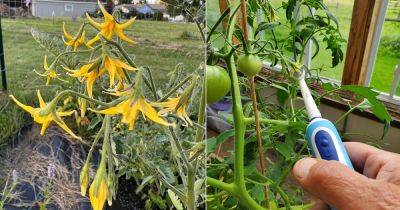While this may sound something straight out of some fairy tale, but this actually works! Tickle, and see your tomatoes producing bumper fruits!
Seeds Ideas, Tips & Guides
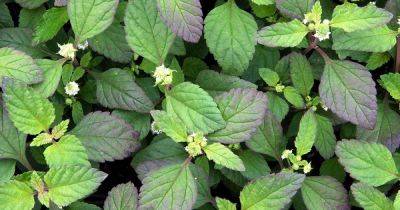
How to Plant and Grow Aztec Sweet Herb
How to Plant and Grow Aztec Sweet Herb Phyla dulcis
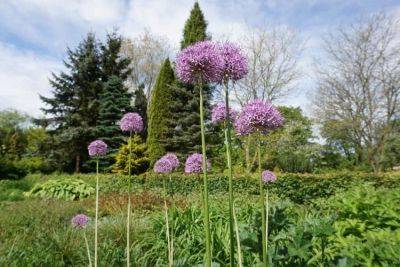
OUTER SPACE FLOWERS – Gardening
In many places in the United States columbines (Aquilegia ssp.) still grow wild. Highbrow hybrids dominate the marketplace, but even they seem to retain some of that wildness. While cleaning out an overgrown greenhouse once, I noticed columbines of indeterminate variety growing up through the cracks between the slate floor’s slabs. In my own garden they tend to self-seed, coming up everywhere but where I intend them to be. They are much like cats, domesticated to a point, but still inclined to go their own way.
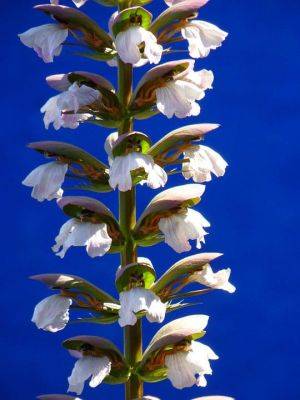
Growers Guide for Bear’s Breech – Acanthus
Bear’s breech is a Handsome, hardy perennial known to the Greeks and Romans, who used the leaf form of Acanthus mollis to decorate the Corinthian column.

Growers Guide for Pot Marigold
Showy annual plants from southern Europe belonging to the Daisy family, Compositive. They have simple alternate leaves and branching stems 1 1/2-2 1/2 ft. high, bearing large heads of yellow, yellowish or orange-colored flowers which are in full beauty during the summer. Calendula is derived from calendae, the calends, the first day of the ancient Roman month-an allusion to the almost continuous flowering character of this plant. Calendulas do best in full sunshine and in rather dry soil. They are raised, from seeds sown out of doors in the spring or early autumn where the plants are to bloom the following year and are very easy to cultivate.
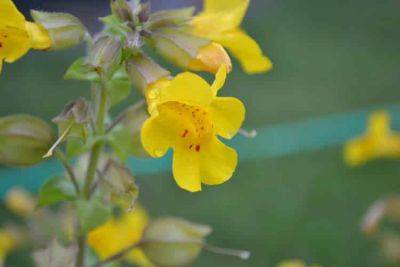
Growers Guide for Monkeyflowers
From the Greek mimo, ape; the flowers were thought to look like a mask or monkey’s face (Scrophulariaceae). Monkeyflower, monkey musk, musk. A genus of hardy annual, half-hardy perennial, and hardy perennial plants grown for their showy flowers. They are found in many temperate parts of the world, particularly North America.
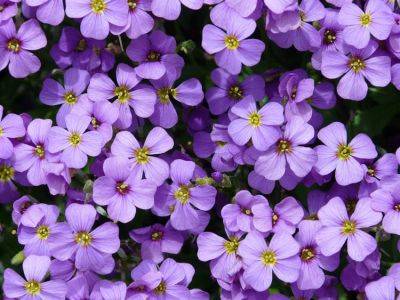
AUBRIETA THE PURPLE ROCK CRESS
Hardy, perennial, more or less evergreen, low-growing plants which bear a profusion of bloom in early spring. They are invaluable in the rock garden and wall garden, as edging to flower borders, and as groundwork for taller plants in spring flower beds. Unfortunately, they are apt to be rather short-lived where hot summers prevail. Young plants seem better able to withstand adverse conditions than older ones; hence it is a good plan to raise some new plants each year. They may, in fact, be successfully treated as biennials. They are widely distributed in mountainous regions along the coast of southern Europe and Persia and belong to the Mustard family, Cruciferae. Aubrieta (previously spelled Aubrietia) is named after Claude Aubriet, a French painter of natural history subjects.
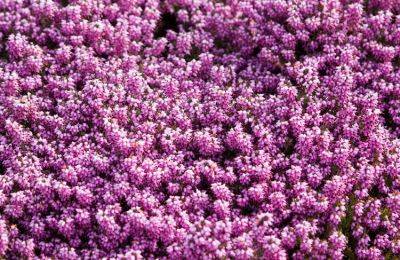
Growers Guide for Heathers, Erica and Callunas shrubs
Small, hardy, evergreen shrubs which grow wild in many parts of Europe and in a few localities in North America. They belong to the Heath family, Ericaceae. The name is derived from kallunein, to sweep. Branches are used as brooms. Only one species. is known, Callunas vulgaris, the common Heather or Scotch Heather, but it has many varieties which differ widely in stature, the color of flowers and color of leaves.

Growers Guide for Viola – Perennial Plant
An old Latin name for violet (Violaceae). A genus of some 500 species of hardy perennials, mainly from northern temperate regions, including violas, pansies, and violets, of which there are many hybrids and strains.

30 Best British Trees and Shrubs and How to Identify Them
Britain and Ireland have between 32 and 35 native tree species. Numbers differ depending on how many individual species of elms and whitebeam are included, whether hybrids are listed, and which species are counted as trees and which as shrubs.
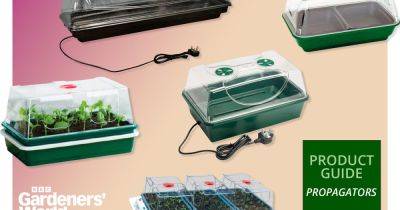
13 of the best heated propagators and heat mats in 2024
Whether you’re starting seeds off in the cold, winter months, encouraging cuttings to root or raising tender plants originally from warmer climates, a constant heat source will help create the best conditions to nurture them. Heated propagators are an ideal accessory which, depending on the type you choose, either offers a consistent, ambient temperature or can be set at a particular temperature to suit your needs. Because of our cooler temperatures, warmer climate plants like tomatoes, aubergines, chilli and bell peppers and squashes need a long growing season to give them time to grow, flower, produce fruit and for the fruit to ripen. Germinating them indoors in a heated propagator early in the year, when outside it would be much too cold for them to grow, ensures they get the long growing season they need. But even hardier and native plants benefit from being germinated at a constant temperature.
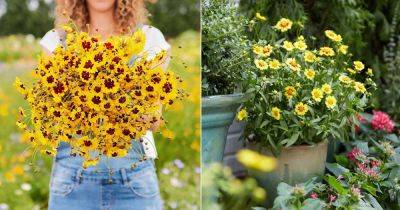
Coreopsis Flower Meaning and Symbolism
Coming in different patterns and colors, Coreopsis flowers also signiy the deeper aspects of life. Let’s have a look at them in detail!
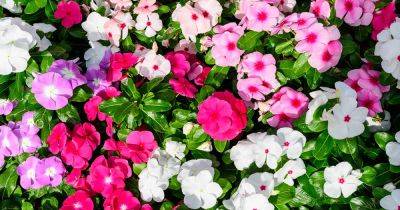
How to Grow Impatiens from Seed
How to Grow Impatiens from Seed

Complete Guide to Dock Leaves
Dock plant or dock leaf is a perennial native plant usually referred to simply as ‘dock’. While generally considered a weed in gardens due to its abundant seeding and persistent, vigorous growth, dock is an excellent wildlife plant as the leaves are an important food plant for many insects, including caterpillars, which are eaten by birds and hedgehogs. Applying dock leaves to soothe nettle strings is a traditional remedy.
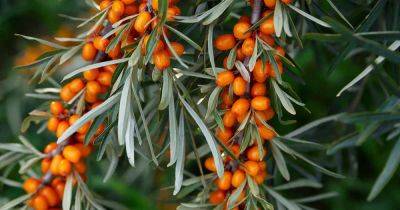
How to Grow and Care for Sea Buckthorn
How to Grow and Care for Sea Buckthorn Hippophae rhamnoides

Six ways to get your garden ready for spring
You can sense it in the slowly stretching evenings, the higher skies, the shifting quality of light, and the noisy chatter of birds. And you can see it in the flowering hellebores, witch-hazel and sweetly perfumed daphne, as well as the snowdrops, daffodils, cyclamen, aconites, crocuses and dwarf irises that have pushed their snouts through cold, wet soil to burst into determined, brilliant bloom.
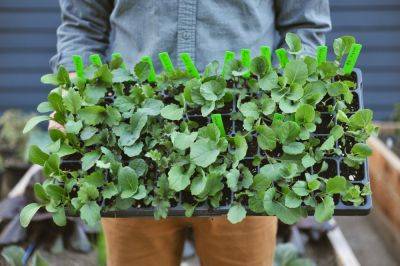
Growing Vegetable Transplants at Home
Every plant in your garden has to come from somewhere, and for most home vegetable gardeners, that “somewhere” is either a seed in a packet or a transplant tray in a garden center. For the ambitious and curious few, there’s a third way to populate a backyard vegetable patch growing your own transplants at home.
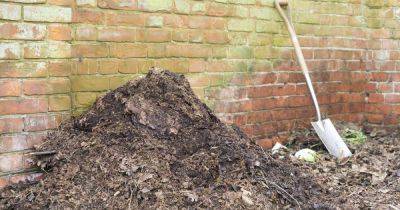
Your gardening questions answered: What’s the best peat-free seed compost for my garden?
Q: Could you please recommend a good peat-free seed compost? I’ve tried a few over the last few years but haven’t had great results. I’d really like to do the right thing environmentally but am now at the point where I’m sorely tempted to go back to using a conventional peat-based compost. CF County Kerry
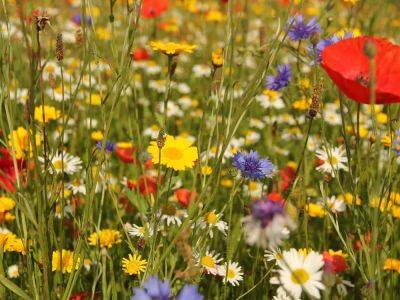
Create a wild and wonderful garden with food and flowers
Reviews and recommendations are unbiased and products are independently selected. Postmedia may earn an affiliate commission from purchases made through links on this page.

Growing Shiso: A Unique Flavor to Add to Your Herb Garden
I love growing interesting flavors in my garden and bringing them into the kitchen to cook with. That is why I added shiso to my seed list a couple of years ago. I first tried this fragrant herb in a restaurant in Western Canada (where I was also introduced to parsley root). It has a very distinct flavor and is very ornamental. Growing shiso from seed is pretty easy and if you let it go to seed in the fall, well, you won’t need to grow more next year.
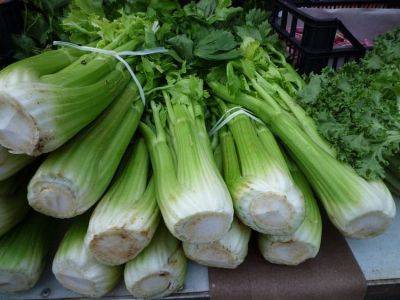
How to grow Collard Greens plants with celery seeds
Sow celery thinly in pots or boxes in heat in March for early varieties, or in a cold house in mid-April for the main crop. Prick off into deep seed boxes as soon as the seedlings are large enough to handle, at 5cm (2in) intervals. After hardening off, plant out from mid May to the end of June, in prepared trenches. This is not only helpful in earthing but enables watering to be carried out by flooding the trench.
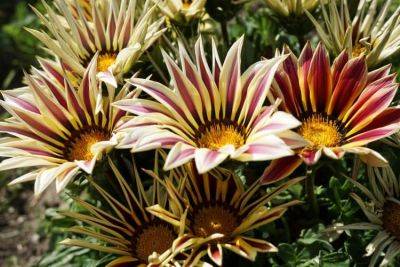
Sorting Seeds
Since confession is good for the soul, I feel compelled to say that I always order too many seeds.And since making excuses is one of the hallmarks of the human condition, I will also say that my seed surplus is not entirely my fault.Seed companies and garden magazines and charities send me all kinds of small seed packets in an effort to get me to buy or subscribe or donate.Since to err is human and to forgive divine, I will strive for divinity by forgiving my own horticultural gluttony.
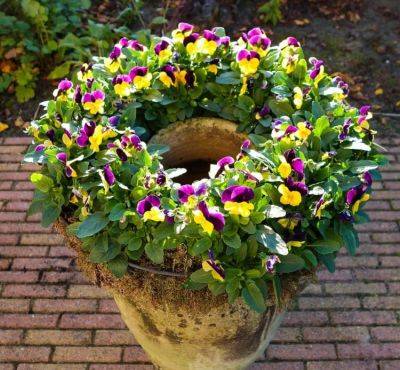
Controlling Animal Pests in the Flower Garden
Although insect pests and plant diseases are generally easy to control in the flower garden, animal pests are not. For one, much of our wildlife is protected by law and can’t be indiscriminately eliminated. You may have variable success with repellents, depending on your location or timing. If the animals are not very hungry or population pressures are not too great, repellents may be enough to discourage invaders. But then again, there’s no guarantee that they’ll work.
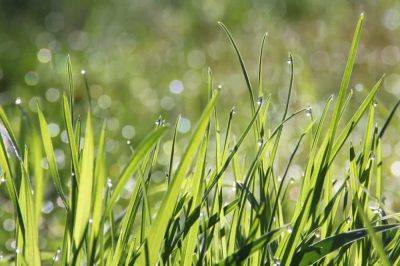
The Garden of Possibilities
My garden is gone.
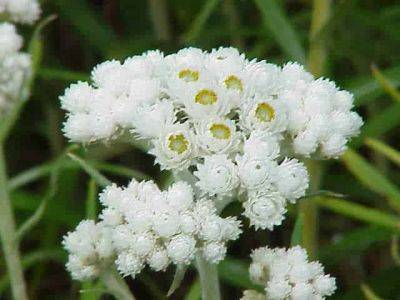
How to grow Anaphalis
Said to be an old Greek name for a similar plant (Compositae). Hardy perennials with white wooly foliage and flowers which can be cut before maturity and dried for use as `everlastings’, sometimes being dyed.
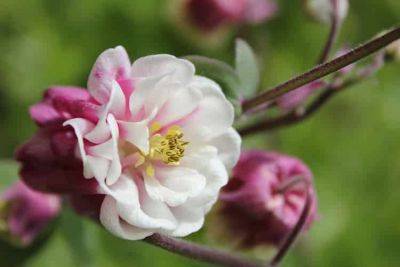
How to grow Aquilegia
The flower form resembles an eagle’s claw, hence the probable origin of this name from aquila the Latin for eagle (Ranunculaceae). Columbine. Hardy herbaceous perennials for the herbaceous border and rock garden. The flowers and leaves are very dainty. Unfortunately, they are inclined to be short lived in heavy wet soils, but they are easily increased by seed. The flowers appear in May and June in a wide range of colors from yellows and creams to blues and reds and purples. The garden hybrids have been raised from various species, e.g. the long-spurred hybrids from Aquilegia longissima. ‘Mrs. Scott Elliott’s’ is a well-known strain, and more recently, there are the McKana Giant hybrids, with larger flowers and long spurs.
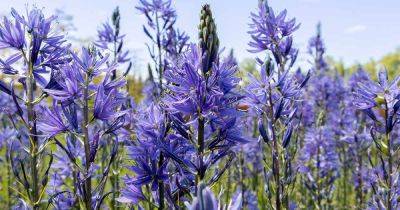
How to Grow and Care for Camassia (Wild Hyacinth)
How to Grow and Care for Camassia (Wild Hyacinth) Camassia spp.
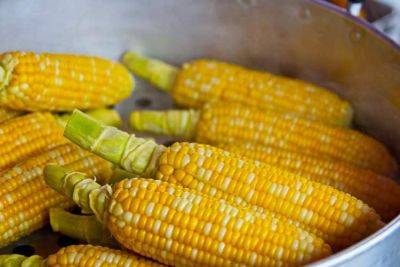
Growing corn and Sweet corn – what are the facts
No other vegetable captures the succulence of summer like sweet corn. Whether you like your kernels white, yellow, or with both colors on the same ear, new hybrids offer incredibly delicious flavor with very little effort.
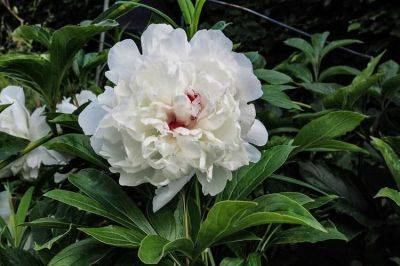
Growing Guidance for Paeonias
Commemorating Paeon, an ancient Greek physician, is said to have first used P. officinalis medicinally. Although the genus has long been considered a member of the buttercup family, Ranunculaceae, some modern botanists now place it in a family of its own, Paeoniaceae. A genus of 33 species of hardy herbaceous and shrubby perennials and a few shrubs, among the noblest and most decorative plants for a sunny or shaded border. The main division of the genus is between the herbaceous and the tree paeony, but botanically, the matter is much more complex.
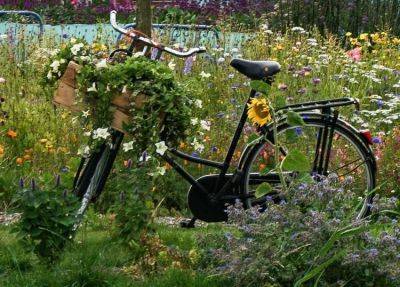
What is a Seed and a Seed Bed
Seeds are produced by plants following the fertilization of the flower, as a means of reproducing the plant. Each seed is a plant embryo, which consists of a minute shoot and root and a store of food. The food reserve enables the embryo to grow before its root is developed to absorb nutrients from the soil and before the leaves emerge above the ground and make sugars by photosynthesis, a complex process. In some seeds, such as those of sunflowers or
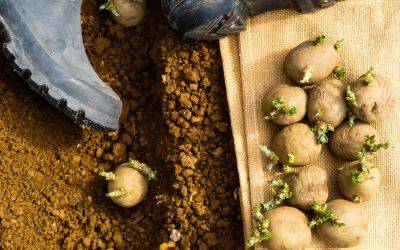
How to chit seed potatoes for an early crop
It is best to chit seed potatoes six weeks before planting time. Early potato varieties grown for new potatoes such as ‘Rocket’ and ‘Swift’ are the first ones to chit, ready for planting in late March.
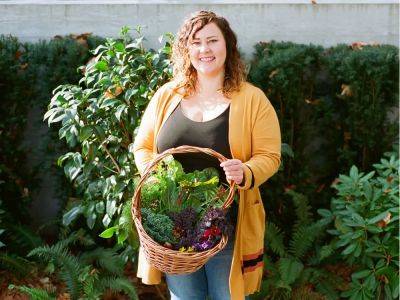
Turn your veggie patch into a focal point in the garden
Reviews and recommendations are unbiased and products are independently selected. Postmedia may earn an affiliate commission from purchases made through links on this page.
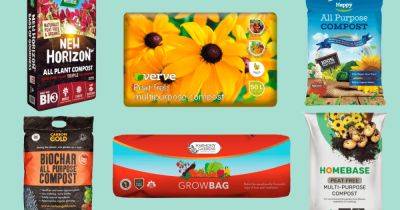
The best peat free compost for delivery 2024
Peat is an acidic growing medium, which thanks to its excellent water and nutrient retention is traditionally used in garden composts. With a low pH it’s ideal for growing acid-loving plants such as blueberries, heather and Camellia sinensis, and peat-based composts have been widely used in horticulture – most garden composts contain some peat, and most garden centres still sell plants growing in pots of peat-based compost. However, due to its environmentally damaging effects, from late this year, the sale of peat-based composts in gardens and DIY stores will be banned in the UK. Issues with peat-free composts, such as expense, availability and performance have hindered its take up in the past but thankfully, compost manufacturers have responded to these concerns with research and investment and a broad range of high quality, peat-free composts are now widely available, with some even costing less than their peat-based counterparts.
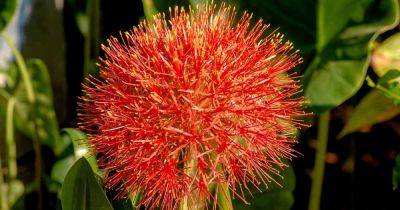
How to Grow and Care for Blood Lilies
How to Grow and Care for Blood Lilies Scadoxus multiflorus

Growing and planting Marigolds: African and French Marigolds
Tagetes (Tage’tes) are annuals of great decorative value during the summer and autumn months. They are natives of Mexico and South America and belong to the Daisy family, Compositae. The name is said to have been derived from a mythological deity, Tages. These Marigolds are quite distinct from the Pot Marigold or Calendula. See Calendula

How to Grow an Orange Tree in Container | Orange Tree in Pot
Growing orange trees in containers is so easy; it will make you think –Why haven’t I tried it before? Don’t worry! You are never too late!
Popular Topics
Welcome to the "Seeds" section of diygarden.cc! Here, we delve into the fascinating world of seeds and provide you with valuable information to help you unlock the potential of these tiny powerhouses in your gardening endeavors.
They are the reproductive structures produced by plants, the result of fertilization and contain the embryonic plant, along with a supply of nutrients to support its initial growth.
Seeds play a crucial role in the plant life cycle, enabling plants to reproduce and spread to new locations. Seeds are typically formed within the reproductive structures of plants, such as flowers, cones, or fruits. Inside a seed, there is an embryo, which consists of the young plant in a dormant state. This embryo has a root, stem, and one or more leaves, which will develop into the mature plant.
In addition to the embryo, a seed also contains a food source called the endosperm or cotyledon. The endosperm provides essential nutrients, such as carbohydrates, proteins, and fats, to support the early growth of the germinating seedling until it can establish its own photosynthetic capacity.
Seeds come in various sizes, shapes, and structures, depending on the plant species. They may be tiny and barely visible to the naked eye, like those of orchids, or large and easily recognizable, like the seeds of sunflowers. Some seeds have protective coverings, such as hard shells or husks, while others are enclosed within fleshy fruits.Our "Seeds" section of diygarden.cc provides you with valuable knowledge, tips, and techniques to embark on your gardening journey.
Our site greengrove.cc offers you to spend great time reading Seeds latest Tips & Guides. Enjoy scrolling Seeds Tips & Guides to learn more. Stay tuned following daily updates of Seeds hacks and apply them in your real life. Be sure, you won’t regret entering the site once, because here you will find a lot of useful Seeds stuff that will help you a lot in your daily life! Check it out yourself!
